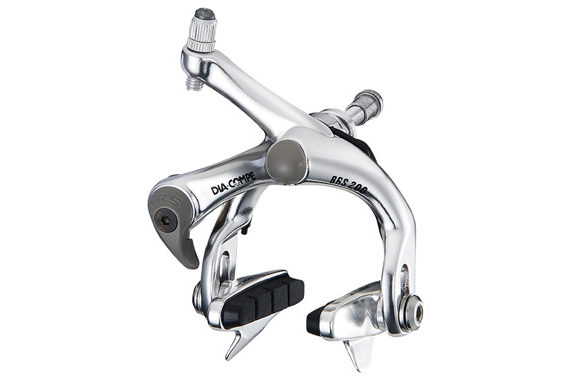Samuel D wrote:Gattonero wrote:I have used "monoplanar" brakes on two bikes, and eventually ditched them because they get very noisy on polished rims (it was much easier to replace the brakes than the rims), otherwise they were good enough.
By noisy you refer to squealing? Polished rims don’t have polished brake tracks (or if they do, not for long), so I’m curious what you mean.
Dual-pivot brakes are indeed easy to centre, but several things about their design bother me slightly:
- the pad on the short arm with the offset pivot moves up toward the tyre as it wears. I ride a fair bit in all weather and that means I spend longer than I like fiddling with pad position, checking it frequently, and otherwise spending thought on this problem. It is aggravated by my rims that have short brake tracks
- to minimise the consequences of the problem above, the pads don’t have much wear material – not even 5 mm in some cases – and therefore don’t last long in the wet
- one pad always wears a little faster than the other. I think this is because the arms move at different rates as the cable is pulled, i.e. you’d need to constantly re-centre the brake as the pads wear and anyway the centring would only be valid for one braking force (that is, for one calliper position). The brake’s practical functioning relies on the rim flexing laterally
- the brakes can feel grabby at times, in particular when trimming speed with gentle braking in fast corners in the wet. This may be related to my wheels not being perfectly true (but hardly any bicycle wheel is, nor should it have to be). Shimano’s SLR design of having a return spring in both the calliper and the lever makes it worse while conferring other benefits. My acute awareness of the danger of braking in wet corners, where there’s not much spare traction budget, adds to my distress here. This off-camber, downhill corner at Longchamp comes to mind (not my video)
- related to the above, if the wheel is severely out of true – for example because a spoke breaks – the brake cannot follow the rim. Any rim wobble is made worse by pad clearance at the low end of useable in my set-up with ~6:1 mechanical advantage.
I don’t doubt single-pivot brakes have their own problems, but maybe I would prefer them to all of the above. As with so many things, reading hasn’t told me. I’d need to try them for myself.
My Monoplanar brakes were always kept in good condition, can't see myself wearing them that much to get play, and even so you can tweak with shims.
The problem I had with them, was a lot of noise when braking, especially on cold days. This was due to the polished rims and brake pad compound. Using some old Record Ti (non-Skeleton) with standard RE700 brake pads cured the problem easily. Btw, though the pull-ratio is not ideal those brake do still work very well with C-Record levers.
1&3: I'd like to know what brakes are you using, as this sounds an exacerbation of a problem that doesn't really show up
2: 5mm of braking compound will do many miles, if you experience a lot of wear I'd advise for frequent cleaning of the pads and rims (which should be always done nevertheless) especially to save the rims. In fact, I replace the pads always before they wear out completely, ought to be the reason why I get many tens of thousands miles in all weather from standard OpenPro's that some people can wear out in less than a year of commuting
3: it sounds to me like you're using a brake with a top-side centering grub screw, and this is not set properly. If correctly done, the brake
will not move away from it's centered position, nor it will rely on the rim flexing on one side (!)
4: assuming that you have the correct caliper for a given lever, the "grabby" feeling is related to pads&rim materials, modern brake pad compounds of good quality don't make noise nor will be grabby. I've used Campagnolo (for decades) and Swissstop (for many years now) and never experienced any "grabby" feeling even when going down the Dolomites at 80kmh.
It's not strange then, on Corima carbon rims I do get a very bad modulation when not using the recommended brake pads
5: if the bike has std. caliper brakes, I'd assume the frame&forks won't have tons of clearance on the sides, so it needs more than one broken spoke to send a standard 32 or 36 spoke wheel that much out of true that a DP caliper won't cope. You're likely to have the tyree rubbing on the frame/forks well before that.
I understand you prefer SP calipers, it's fair enough. But give a try to a pair of Campag DP brakes (not the latest ones) and you'll be surprised that you won't get any of the problems you fear

